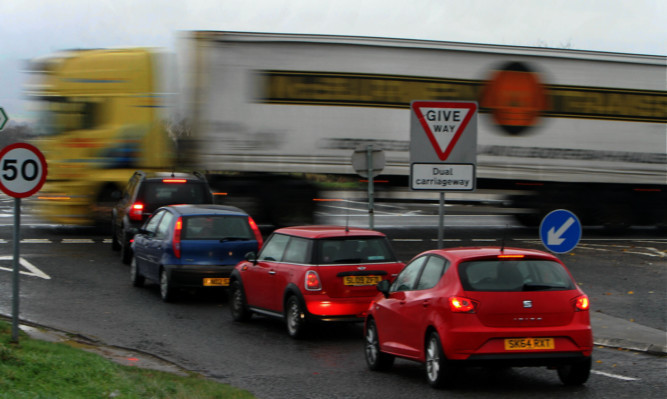A traffic analysis survey delay on a Mearns blackspot has sparked disappointment and anger among campaigners.
Engineering consultants CH2M HILL are carrying out the analysis as part of their Access to Laurencekirk Study, which aims to identify a preferred solution to the access between the A90 and the Mearns town.
Transport Scotland has confirmed, however, that the study has been delayed and the report will not be available until early next year.
Flyover campaigner Jill Fotheringham said: “We are really disappointed and very angry.
“We are now facing another winter having to cross the junction, which will be made even more dangerous with rush hour being in darkness.”
The A937 between Montrose and Drumlithie taking in the controversial Laurencekirk south junction with the A90 was “named and shamed” earlier this month as the third most dangerous in the UK.
The road only comes behind a coastal route in the south of England, on which serious crashes have increased 16%, and a 10-mile stretch of the A809 in Glasgow.
Jill, who has spent 10 years calling for safer grade separation of the A90/A937 junction, said campaigners were pinning their hopes on the CH2M HILL report bringing something positive.
“The results of this study were due to be published by the end of this year and it will soon be two years since Transport Scotland said they were instructing it to be done.
“It is beyond ridiculous now and I just hope we don’t provide them with another statistic to put in future reports.”
Jill said she was “losing hope” that the report will bring anything more than “reasons why it doesn’t need to be done.”
She added: “The junction doesn’t need any more endless reports and studies done on it to know how to fix it. Just cross over and look the cure is obvious.
“For the cost of all these reports, studies and surveys that Transport Scotland has handed us over the years, trying to tell us why a flyover is not needed, they could have built the damn thing by now.”
Mike Robson, from Laurencekirk Villages in Control, hit out at the delay and said the impact of increased developments on the already saturated junction “cannot be understated”.
David Anderson, head of planning and design at Transport Scotland, said it was important that further time was given to “gather all the necessary information”.
He said: “As a consequence of this, the programme of work has been extended and the additional public ‘drop-in’ session with local residents will now take place early next year.
“In light of these developments, we now anticipate the report will be available during the early part of next year.”
